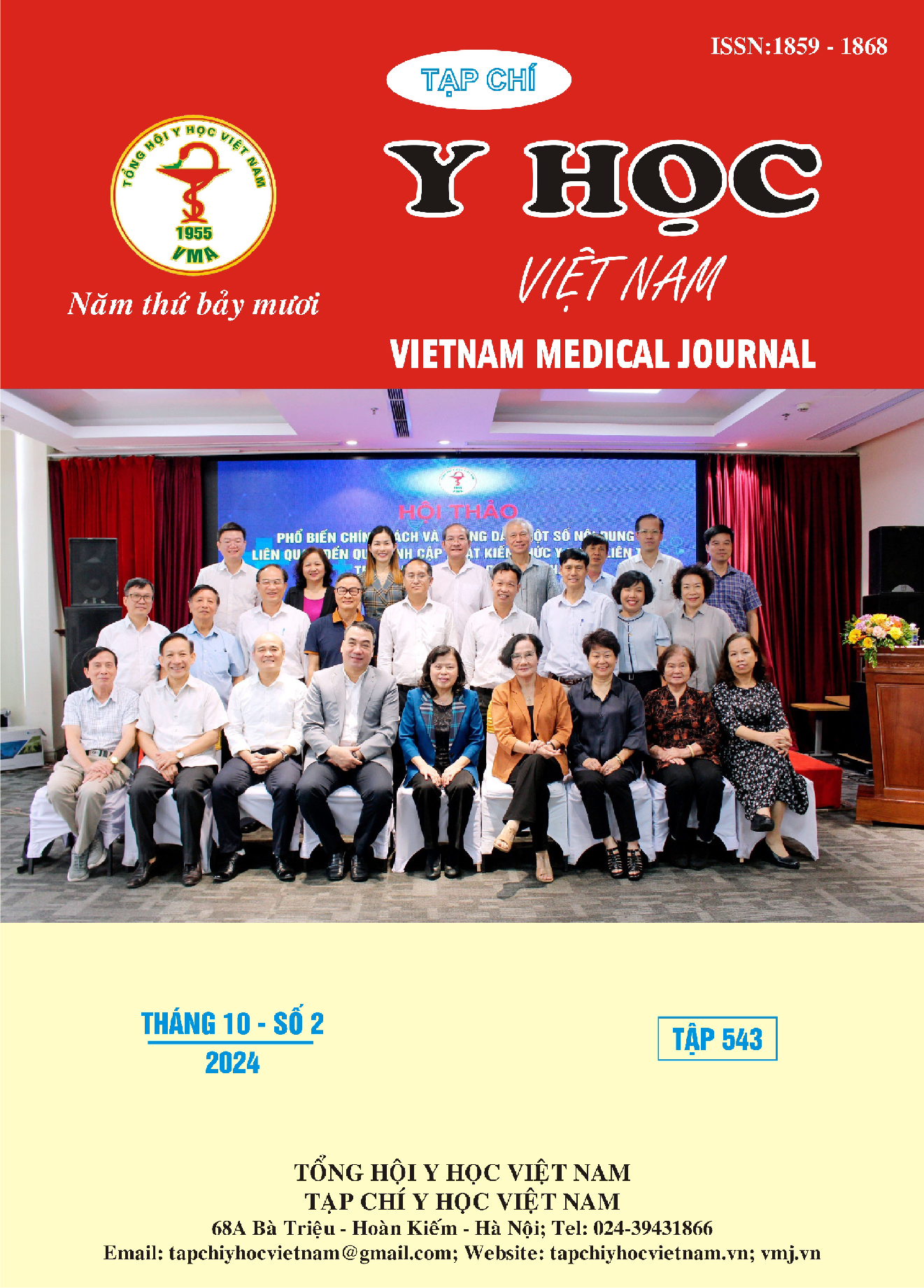DRUG RESISTANCE AMONG SEVERE COVID-19 PATIENTS RECEIVING HIGH-FLOW NASAL CANNULA (HFNC)
Main Article Content
Abstract
Co-infection in severe COVID-19 patients is a significant factor elevating disease severity and mortality. Objective: To characterize etiology and its drug resistance of co-infection among severe COVID-19 patients using HFNC. Methods: This is a prospective study analyzing microbiological data to describe the drug resistance pattern and identify risk factors of mortality from April, 2021 to December, 2023 in National Hospital for Tropical Diseases, Vietnam. Results: 83 patients collected include fungal infection were found in 66/83 (79.5%) including Candida albicans (63.6%), Aspergillus fumigatus (18.2%), Candida tropicalis (16.7%). Common bacterial infection consisted of A. baumannii (65.7%), K. pneumoniae (25.7%). A. baumannii and Aspergillus fumigatus were more likely to be co-infection in the failed HFNC group than in the successful group (p<0.05). Candida albicans was more likely to cause co-infection in the successful HFNC group than in the failed group (p<0.05). Candida has been sensitive to almost antifungal drugs, apart from 40% C. tropicalis were resistant to Fluconazole. Meanwhile, 53.8% A. baumannii strains were sensitive to Trimethoprim/Sulfamethoxazole. Conclusion: The causes of pulmonary co-infection in COVID-19 patients using HFNC included both bacteria and fungi. While candida fungi have been sensitive to antifungal drugs, bacteria have been resistant to most common antibiotics.
Article Details
Keywords
COVID-19, HFNC, Pulmonary co-infection
References
2. Bộ Y tế, Hướng dẫn chẩn đoán và điều trị COVID-19 do chủng vi rút Corona mới (SARS-CoV-2), B.Y. tế, Editor. 2021.
3. Langford, B.J., M. So, S. Raybardhan, et al., (2020). Bacterial co-infection and secondary infection in patients with COVID-19: a living rapid review and meta-analysis. Clin Microbiol Infect, 26(12), 1622-1629.
4. Lê Phương Mai, Trương Thiên Phú, and Trần Trọng Tín, (2023). Đặc điểm đồng nhiễm vi khuẩn trên bệnh nhân COVID-19 tại Bệnh viện hồi sức COVID-19. Tạp chí Y học Việt Nam, 529(1), 26-30.
5. Thân Mạnh Hùng and Nguyễn Quốc Phương, (2023). Đặc điểm nhiễm nấm và tình trạng kháng thuốc kháng nấm ở Bệnh nhân COVID-19 có viêm phổi thở máy tại Bệnh viện Bệnh Nhiệt đới Trung ương (4/2021 - 3/2022). Tạp chí Y học Việt Nam, 532(1).
6. Phan Trần Xuân Quyên and Võ Phạm Minh Thư, (2023). Đặc điểm lâm sàng, cận lâm sàng, sự đề kháng kháng sinh và kết quả điều trị viêm phổi Bệnh viện do vi khuẩn Acinetobacter baumannii tại khoa Hồi sức tích cực - chống độc Bệnh viện Đa khoa Trung ương Cần Thơ. Tạp chí Y Dược học Cần Thơ, (30), 7-14.
7. Hoàng Xuân Quảng, Bùi Thị Thanh Nga, Nguyễn Thị Thu, et al., (2022). Đặc điểm kháng kháng sinh của vi khuẩn Acinetobacter baumannii phân lập tại Bệnh viện Quân Y 103 giai đoạn 2019 - 2021. Tạp chí Y Dược học Quân sự, 47(7), 57-67.
8. Đỗ Thị Tuyết Chinh, Văn Đình Tráng, Nguyễn Thị Thu Hà, et al., (2023). Thực trạng kháng kháng sinh của Klebsiella pneumoniae phân lập tại Bệnh viện Bệnh Nhiệt đới Trung ương năm 2022. Tạp chí Truyền nhiễm Việt Nam, 3(43), 32-38.


